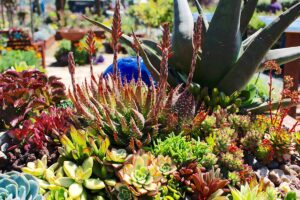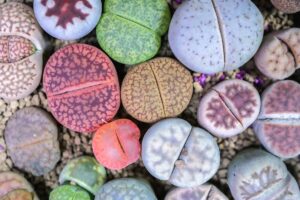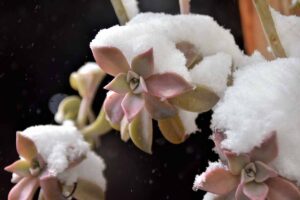Yucca brevifolia
The captivating Yucca brevifolia, commonly known as the Joshua tree, is a member of the agave (Agavaceae) family.
With the Mojave, Great Basin, and western Sonoran Deserts composing its native growing range, this slow-growing evergreen monocot is an iconic desert dweller.
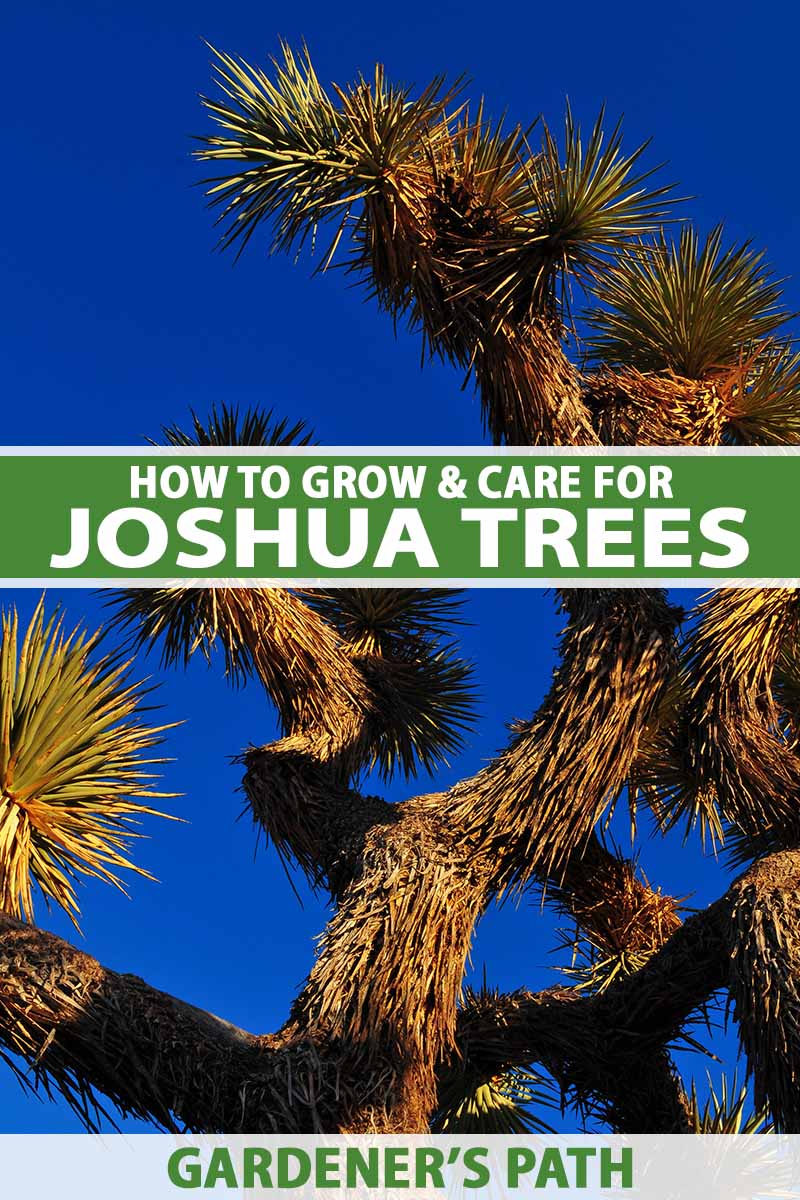
We link to vendors to help you find relevant products. If you buy from one of our links, we may earn a commission.
These majestic drought-tolerant yuccas can’t be grown in just any garden! They require the perfect setting to thrive. Expansive growing spaces where summer is hot and winter is cold best suit their cultivation needs.
If your landscape is a perfect candidate for these majestic succulents, I highly suggest planting them to support their continued existence in the face of climate change.
Continue reading to learn some amazing facts about Y. brevifolia and how to cultivate and care for them. Here’s what’s ahead:
What You’ll Learn
Cultivation and History
Y. brevifolia is an ancient plant species that can live for a long time. The average lifespan is 150 years. One 60-foot-tall Joshua tree growing in California is thought to be 1,000 years old!
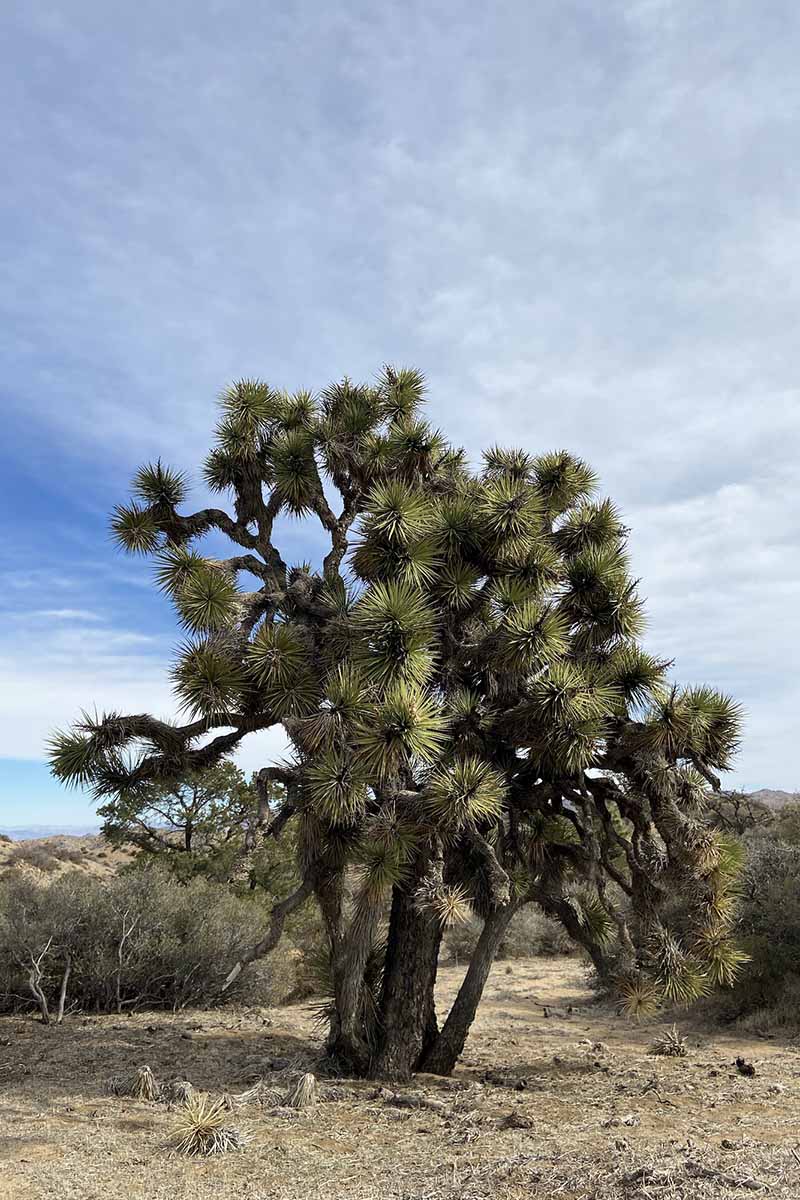
Despite common names referring to them as trees, yuccas are not trees, although this particular species is the tallest and most tree-like.
They can reach over 30 feet in height with an open canopy of equal size. The species epithet brevifolia translates to “short-leaved.”
Their narrow and dagger-like blue-green leaves are about a foot long with pointy edges that are yellow and brown at the tip. The evergreen foliage grows in clusters at the end of the branches.

Younger Joshua trees have small trunks of about one to five feet in diameter and branches covered with dead leaves facing downwards, with clusters of evergreen leaves growing at the tips of the branches.
Larger trunks that are more mature drop the older leaves, exposing rough gray bark.
Branching occurs after flowering, and Joshua trees that grow in a singular column without any branching have not yet flowered. Various types of wild birds like cactus wrens, American kestrels, and northern flickers will perch on the branches and nest on them.
The bell-shaped white-green flowers typically bloom in spring. However, there have been instances when out-of-season flowering occurs.
A recent study using citizen-science data analyzing a phenological anomaly in yucca of the southwestern United States by researchers L. Brenskelle, V. Barve, and L. C. Majure indicates that there is no singular signal that prompts flowering in these plants. Instead, bloom time is relative to temperature, length of daylight, and precipitation.
This synchronous interaction will fluctuate with changes in local climate. For this reason, some researchers view Joshua trees as significant indicators of climate change.
The flowers are slightly over an inch in length and have six sepals. They grow at the end of branches in crowded clusters that can be 20 inches long and have an aroma similar to mushrooms.
A fascinating example of a mutualistic relationship occurs between Joshua trees and yucca moths (Tegeticula spp.).
This type of moth is the exclusive pollinator responsible for pollinating Y. brevifolia flowers, which in turn support the moth’s survival by serving as a place to lay their eggs.
Maintaining the ecosystems they inhabit is critical in supporting this symbiotic relationship.
The fruit produced after flowering can be two to four inches long and starts out green and fleshy. As the fruit matures, it turns light brown and falls off the plant in late spring.
The ripe seed pods remain intact after they fall off and contain many seeds. Some seeds may have holes in them as the result of moth larvae feeding. But these plants produce an abundance of seeds, and it’s unlikely that all of them will be damaged.
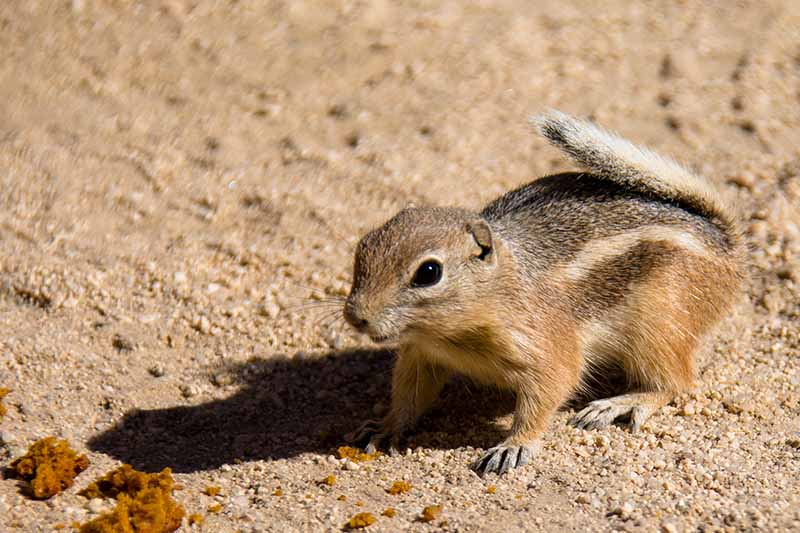
Various rodent species such as California ground squirrels, Mojave ground squirrels, white-tailed antelope squirrels, canyon mice, and Merriam’s kangaroo rats feed on and store Y. brevifolia seeds. As such, they are largely responsible for seed dispersal.
The relationship between this yucca species and local wildlife goes way back in time.
There are fascinating theories that point towards ancient ground-dwelling sloths from the late Pleistocene era being responsible for the majority of the dispersal of Y. brevifolia seeds at that time.
This possible correlation between the Joshua tree and Shasta ground sloth (Nothrotheriops shastensis) was first revealed in a 1930s excavation at Gypsum Cave in southern Nevada.
The plant fossils were observed in the sloth’s dung, which contained leaf fibers, fruits, and seeds of Y. brevifolia. This presented possible evidence of this slow-moving herbivore’s vital role in the ecosystem, particularly in the dispersal of Joshua tree seeds.
The ideal climate that Y. brevifolia thrives in is also crucial to the species’ survival. Current and future climate shifts that directly impact this cherished yucca’s growing range can have a devastating impact.
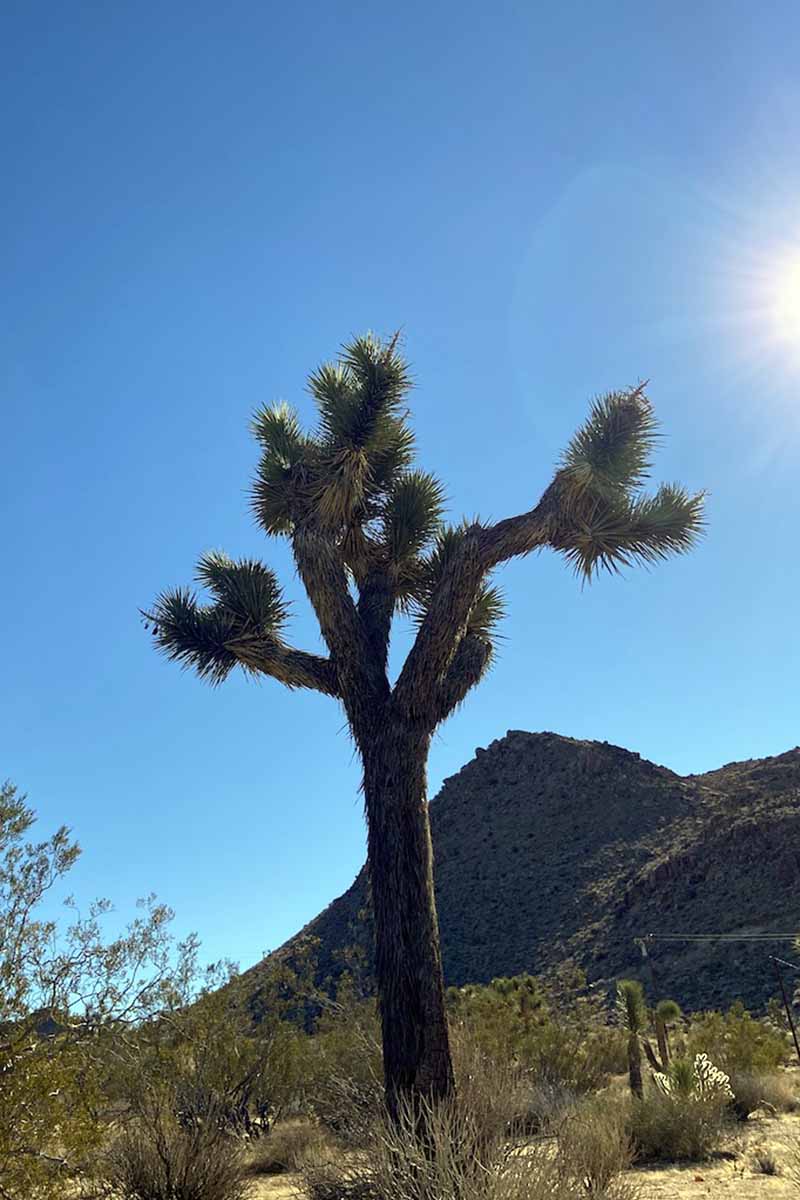
These picturesque slow-growing succulents are also cold-hardy. They experience lower winter temperatures in their native range than gardeners might in other parts of southern California, tolerating temperatures down to -13°F.
The higher elevations and cooler temperatures of their native range also suggests that they require a period of cold dormancy for optimal growth.
According to National Park Service Vegetation Specialist Jane Rodgers, “like all desert blooms, Joshua trees depend on just the perfect conditions: well-timed rains, and for the Joshua tree, a crisp winter freeze. Researchers believe that freezing temperatures may damage the growing end of a branch and stimulate flowering, followed by branching.”
Long before this yucca was known as the Joshua tree, the species went by different names bestowed by the surrounding Indigenous peoples of the region.
The western Shoshone call them umpu, southern Paiute refer to them as sovarampi, and the Cahuilla people know this plant as humwichawa.
Their leaves are used to make baskets, ropes, mats, sandals, and clothing, while their flowers, fruit, and seeds are enjoyed as food.
Their most common name today comes from early Mormon settlers who were reminded of the Old Testament prophet Joshua when first viewing the towering plants. This species is also called yucca palm, tree yucca, and palm tree yucca.
Currently, in the Mojave Desert, this iconic species is becoming an increasingly hot topic as land development and climate change continue.
In an April 2022 press release issued by the Center for Biological Diversity, the public was made aware of a report by the California Department of Fish and Wildlife that would end interim protections for the western Joshua trees.
As a result, there is much concern among community members, conservationists, and scientists about what lies ahead for these native plants.
With increased land development and the worsening climate crisis, the need for a solid conservation plan for Joshua trees is crucial for their future.
A June 2022 article published in The Guardian, Maanvi Singh reported that the petition to protect Y. brevifolia under California’s Endangered Species Act will be reconsidered in October 2022 by the state’s fish and game commission.
The current conditional protection at the time of this writing does not guard them from renewable energy projects that remove the native succulent species during development.
Given the opportunity, it’s incredibly beneficial for the future of this species and the wildlife these plants support to cultivate them in home gardens and landscapes. We’ll cover the best way to propagate these plants and how to care for them next.
Propagation
Seed propagation is highly recommended since it is an ethical approach with exceptional results. This method will mostly require patience as it takes years for Joshua trees to mature.
Because collecting them from the wild is illegal without a permit and because of the western Joshua tree’s threatened status, be sure to collect seeds only from cultivated plants in areas where this is allowed.
Alternatively, purchase seeds or nursery-grown plants from responsible vendors.
From Seed
Typically, seeds are ready to be gathered for propagation by late summer. Seed pods should be completely dry, and when you pry them open, the seeds inside should be black. If you wait too long to break open a seedpod, it will become harder and more difficult to open.
You will notice that some of the seeds have holes in them as mentioned above, created by moth larvae that chew on the seeds as they mature. Toss those seeds out, and keep the ones without holes for propagation.
Seeds can become less viable the longer they are stored. For best germination results, sow freshly gathered seeds as soon as possible.
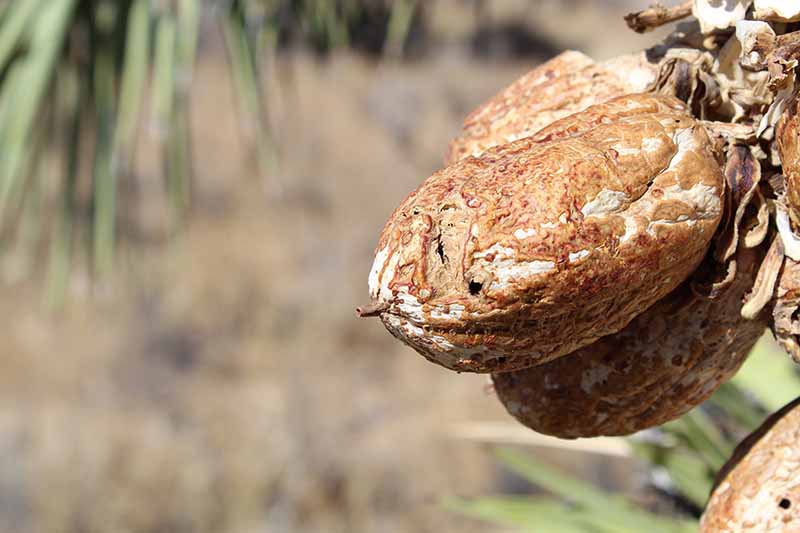
Soak the seeds in water overnight and plant them the next day.
Choose a one-gallon pot with drainage holes and fill it with fast-draining soil such as Espoma Cactus Potting Mix, available from Gardener’s Supply Company.
Place one or two seeds on the surface of the soil, sprinkle a little soil on top to lightly cover by about an eighth of an inch, and pat it down gently. If you’ve planted two and both seeds sprout, thin to keep the stronger seedling.
Germination requires warm soil temperatures between 60 to 70°F and takes about one to three weeks.
Keep the pot in a warm and sunny location and water as needed so the soil is moist but not soggy. Keep in mind that the warmer the soil is within the recommended range, the faster germination will be.
Seedlings require more water than established plants. Water them weekly for their first year. Keep your young plant out of direct sunlight and in temperatures close to 85°F during the day as they continue to grow.
If nighttime temperatures will drop below 20°F degrees be sure to bring your seedlings indoors.
The seedlings will look like blades of grass and it will take several years before they begin to resemble trees. When they are about 10 inches in height, you can transplant them into their permanent location.
From Seedlings/Transplanting
Transplant your seedling in fall or early spring in an area that receives full sun and has adequate soil drainage. Make sure the planting site you select provides ample room for them to grow. Space these plants at least 30 feet apart.
Dig a hole that is double the size of the root structure and gently place the plant inside, being careful not to disturb the taproot. Backfill the hole with the soil you dug up and water deeply.
Follow by watering each week in the absence of rain until the plant becomes established with at least five gallons of water per plant in each irrigation session. Keep in mind they don’t like soggy soil which can cause root rot.
From Cuttings
There’s a reason why you won’t find much information about propagating western Joshua trees from cuttings, and that’s to protect them from being harmed in the wild.
I only advise propagating from cuttings when they have been sourced ethically and not gathered from the wild, which is illegal without a permit.
When it comes to the eastern Joshua tree, we need first to be sure that the variety identification is correct before moving forward with taking cuttings for propagation.
Once you have taken all the appropriate steps to propagate ethically from a cutting, you can begin to plan your approach. It’s best to complete this process in the colder seasons of late fall and early winter so the plant has time to mature before the stress of hot conditions arrives.
Before placing your cutting into a container double its size with well-draining soil or in the ground, allow the end to callus over.
Once the bottom has dried out, you can place your cutting about six inches deep into the ground or a container and secure a large stake next to it to keep it upright as roots develop and it becomes established.
Water at planting time and then only when the soil has completely dried out, and wait until the following year to transplant container-grown cuttings outdoors. Keep your cuttings in the same conditions as you would seedlings, described above.
From Divisions
It will take several years before a plant produces offsets. Remember that western Joshua trees are protected, and you must check with your regional California Department of Fish and Wildlife office for regulations and permits.
If you have confirmed the variety as an eastern Joshua tree, you can proceed with division of the plants without a permit only if the plant is growing within your property lines.
Carefully use a sharp knife to remove offsets from the main plant and allow them to callus before planting them in well-draining soil. Water only when the soil dries out until the plant becomes established by growing a strong taproot.
How to Grow
In their first five to 10 years, Joshua trees grow about three feet per year. After that, they slow down to one foot per year.
Mature Joshua trees will only require supplemental water during times of extreme drought and high temperatures.
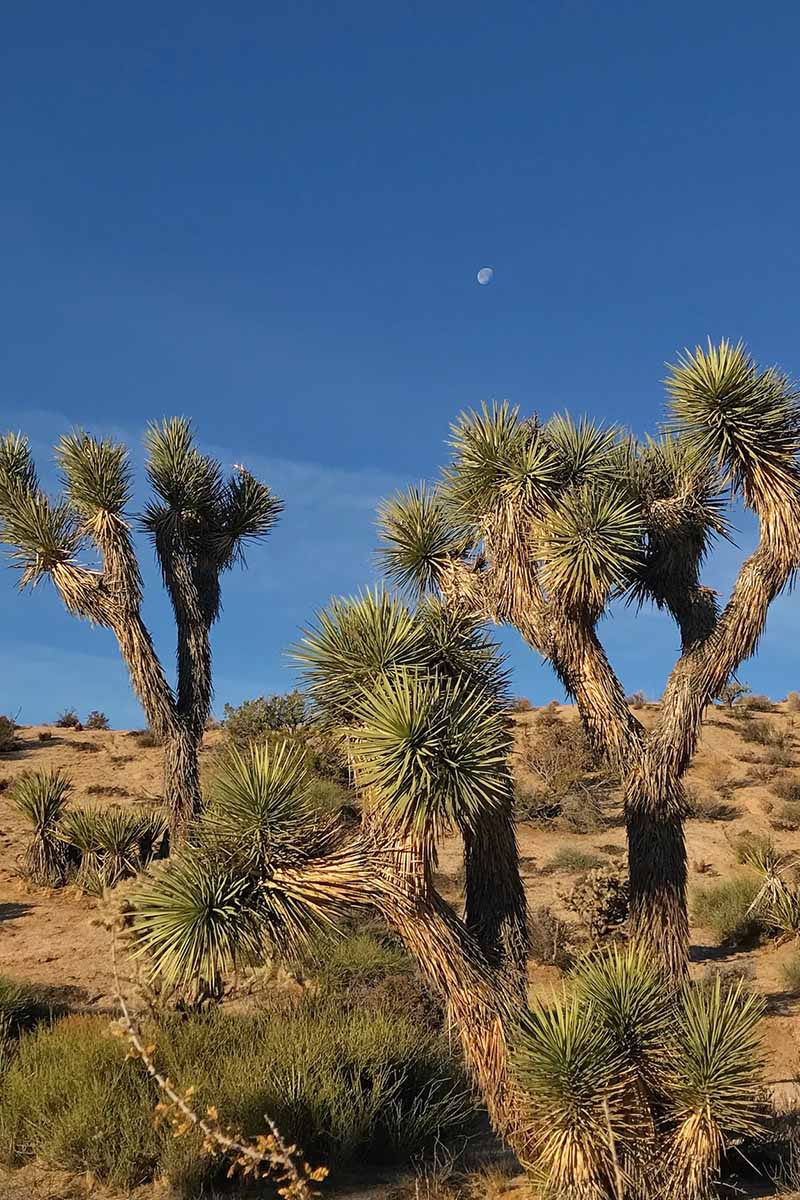
If you’re providing supplemental water, allow the soil to completely dry out between waterings and plan to provide irrigation once a month as needed.
This evergreen desert plant doesn’t require any additional fertilizer and thrives in poor soils. A major part of this plant’s appeal is that it is maintenance-free!
Growing Tips
- Plant in areas with fast soil drainage.
- Provide ample room for growth.
- Allow soil to completely dry out between waterings.
Pruning and Maintenance
There is no need to fuss with these plants. Once they’re growing in your space, they will be there for many years to come!
Allowing the dead leaves to cover their trunk mimics their natural growth habit, which helps create insulation for the colder months. However, if leaves show signs of pest infestation you can easily remove the affected foliage without harming the plant.
Sometimes a branch may break off during a storm, giving you a cutting to propagate.
Thanks to this plant’s resiliency, it shouldn’t be affected too much by the broken limb. If needed, you could use a sharp pair of loppers to even out the cut where the branch broke.
If you wish to trim off spent flower stalks, consider allowing them to fruit and produce seeds prior to cutting them off. You can then save seeds to share with others or propagate more plants for your own garden.
Varieties to Select
The availability of Y. brevifolia plants is limited. It’s best to check with native plant nurseries that practice ethical sourcing of the plants they sell if you wish to purchase a potted specimen.
Calscape, a resource provided by the California Native Plant Society, has a nursery directory available that allows users to search for native plant species.
These yuccas tend to sell out fast, so it’s wise to get on a waitlist as soon as you can!
Jaegeriana
Yucca brevifolia var. jaegeriana has a native growing range throughout the eastern part of the Mojave Desert in Arizona, California, Nevada, and Utah.
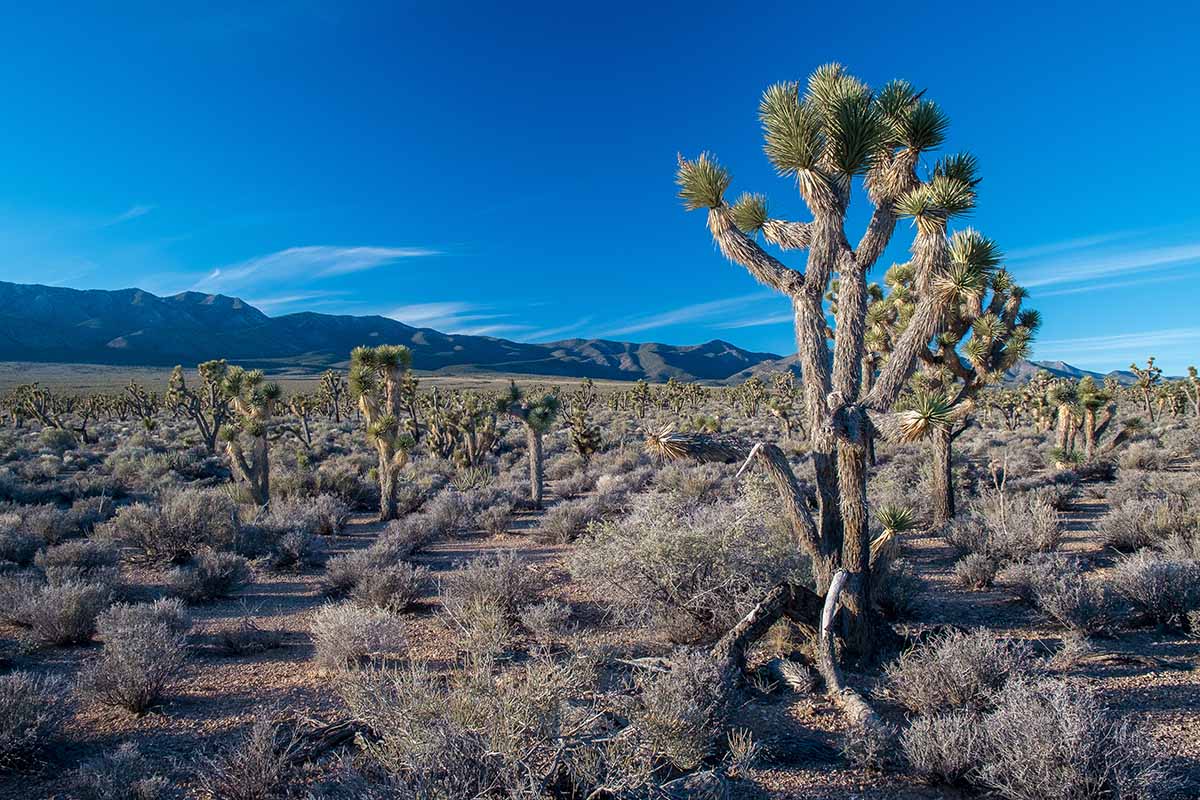
Commonly known as Jaeger’s Joshua tree or the eastern Joshua tree, this variety is compact in size and may be a more suitable selection for those who don’t have the ample growing space that Y. brevifolia requires.
The eastern Joshua tree is generally recognized as Y. brevifolia var. jaegeriana.
However, the US Fish and Wildlife Service views this plant as a distinct species, Yucca jaegeriana. Their distinctiveness in pollination, growth structure, and even genetic studies supports their recognition as a distinct species.
Aside from differences in their native range along with these studied differences and the opinions of botanists, both the standard species and this variety are similar in their appearance and cultivation requirements.
The eastern Joshua tree has shorter leaves and a shorter main trunk than Y. brevifolia. And branching is not dependent on flowering like it is in Y. brevifolia – these plants branch freely.
Managing Pests and Disease
Truly, there is very little to worry about when growing these yuccas, as long as they’re cultivated in a favorable environment.
Having ample space for them to grow and utilizing appropriate irrigation methods are the main areas to focus on to support optimal growth.
Thanks to the toughness of this yucca there are not many pests or diseases you have to be wary of, and infestations or infections are not common.
Following all the recommended planting instructions described here will help to prevent future issues like root rot.
Be sure to choose a planting location where your yucca will have fast-draining soil, full sun exposure, and appropriate supplemental irrigation to support optimal growth.
If you happen to have agaves planted where you would like to introduce this yucca, it’s helpful to be aware of this pest’s potential to infest nearby Joshua trees as well.
Agave Snout Weevils
Scyphophorus acupunctatus is one insect that it’s important to look for, especially if you have agaves planted near your yucca.
This is the only known pest that has the potential to damage Y. brevifolia, and there are no insecticides that have been proven to prevent or get rid of these weevils.
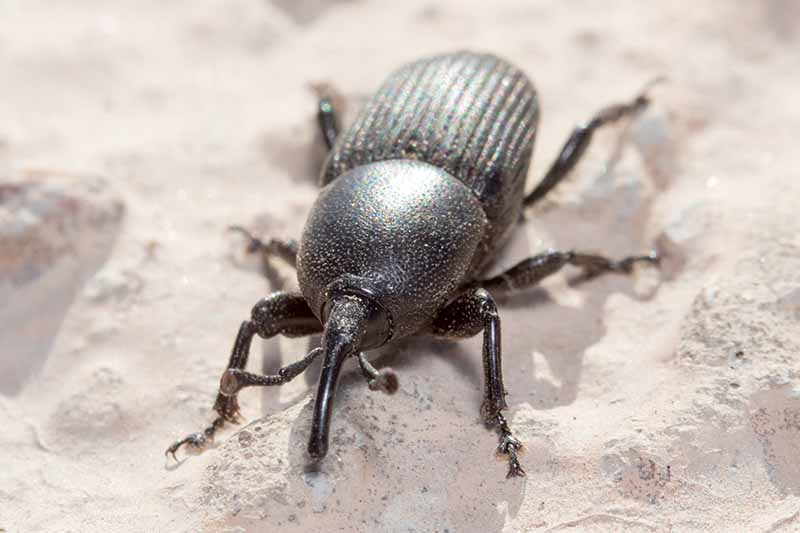
Weevils have protruding snouts with mouthparts for chewing. Agave snout weevils in particular are brownish-black and about half an inch in length.
Shriveled or rotting leaves and holes in trunks might be indications of an infestation. Remove infested plants immediately and destroy them.
Root Rot
Once they have become established, this species does not take well to transplanting. It’s imperative to plant in fast-draining soil and avoid overwatering, which can lead to root rot and the death of your plant.
Caused by the water mold Phytophthora cinnamomi, signs of root rot include a soft trunk and wilted leaves that will begin to turn black and fall off as the disease progresses.
You can add gravel or sand to your soil to help increase soil drainage. This should be done at planting time, but the surrounding soil can be amended if necessary after a plant is already in the ground.
Best Uses
Incorporating this species into xeriscape designs creates a dramatic backdrop and habitat for local wildlife.
In time, Joshua trees do a fantastic job filling up expansive spaces, which is a payoff for the patience it takes to cultivate these slow growers. They make exceptional hedges that attract beneficial pollinators like butterflies and birds.
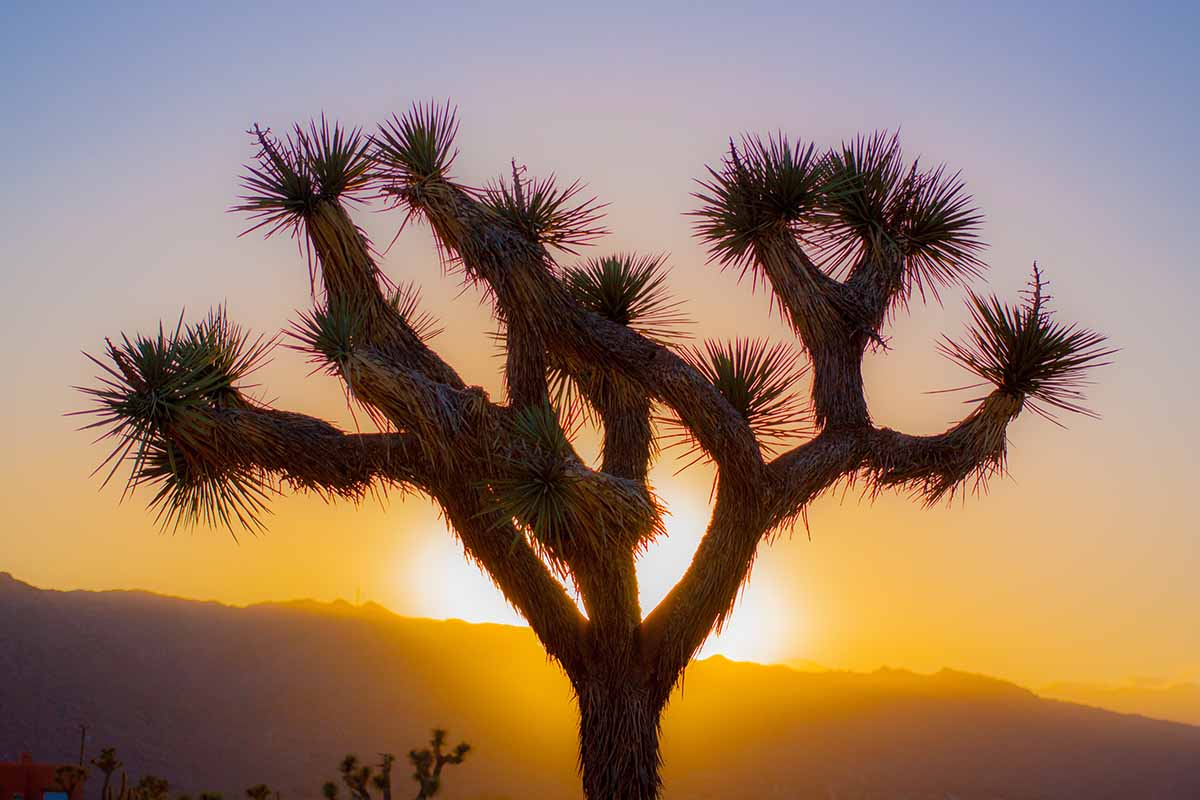
You could also say that by having this yucca species growing in your garden, you are a conservationist helping to steward a brighter future in the face of climate change that has resulted in dwindling populations of this plant in the wild.
And that’s something to be proud of!
Quick Reference Growing Guide
| Plant Type: | Perennial evergreen succulent | Flower/Foliage Color: | White, light green/green |
| Native to: | California, Arizona, Utah, Nevada, Mexico | Maintenance: | Low |
| Hardiness (USDA Zone): | 6-10 | Tolerance: | Drought, sand, rocky soil |
| Bloom Time/Season: | Spring | Soil Type: | Rocky, sandy, lean |
| Exposure: | Full sun | Soil pH: | 6.0-8.0 |
| Time to Maturity: | 10+ years | Soil Drainage: | Well-draining |
| Planting Depth: | 1/8 inch (seeds); root ball depth (transplants) | Attracts: | Butterflies, birds, moths, small rodents |
| Spacing: | 50 feet | Uses: | Focal point, habitat gardening, hedges, pollinator gardening, xeriscaping |
| Height: | 30+ feet | Order: | Asparagales |
| Spread: | 30+ feet | Family: | Asparagaceae |
| Water Needs: | Low | Genus: | Yucca |
| Common Pests and Diseases: | Mealybugs, scale, weevils, Cercospora leaf spot, brown spot, gray leaf spot, southern blight | Species: | Brevifolia |
Yuccas for Your Yard
I can’t think of a more dramatic yucca species to add to your landscape with many interesting facts that you may entertain visitors with.
If you’re not propagating from seed, remember to only purchase from an ethical supplier of this plant species since removing Y. brevifolia from the wild or taking cuttings without a permit is illegal.
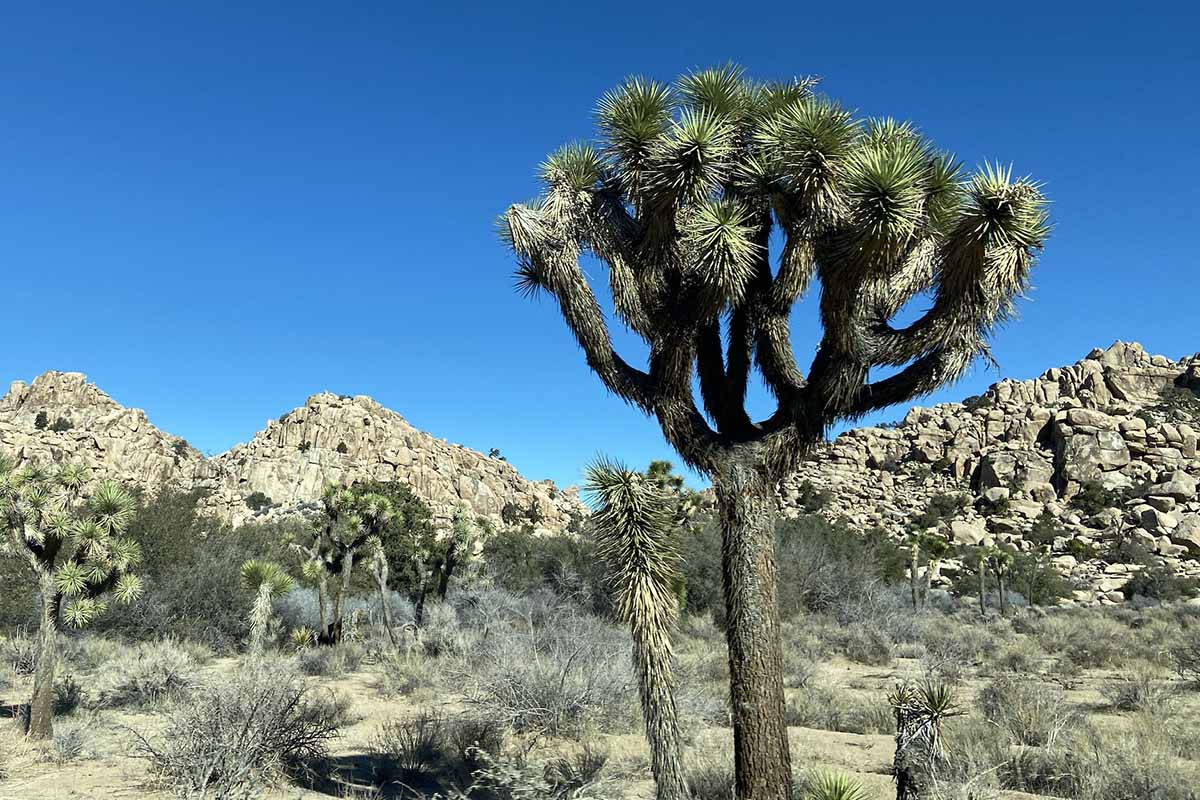
A suitable landscape is essential in cultivating this stunning succulent, where it will reward visitors to the garden with dazzling views for generations to come.
Want to learn about other cacti and succulents that you can add to your garden to enhance the beauty of your Joshua trees? These growing guides are sure to inspire you:

